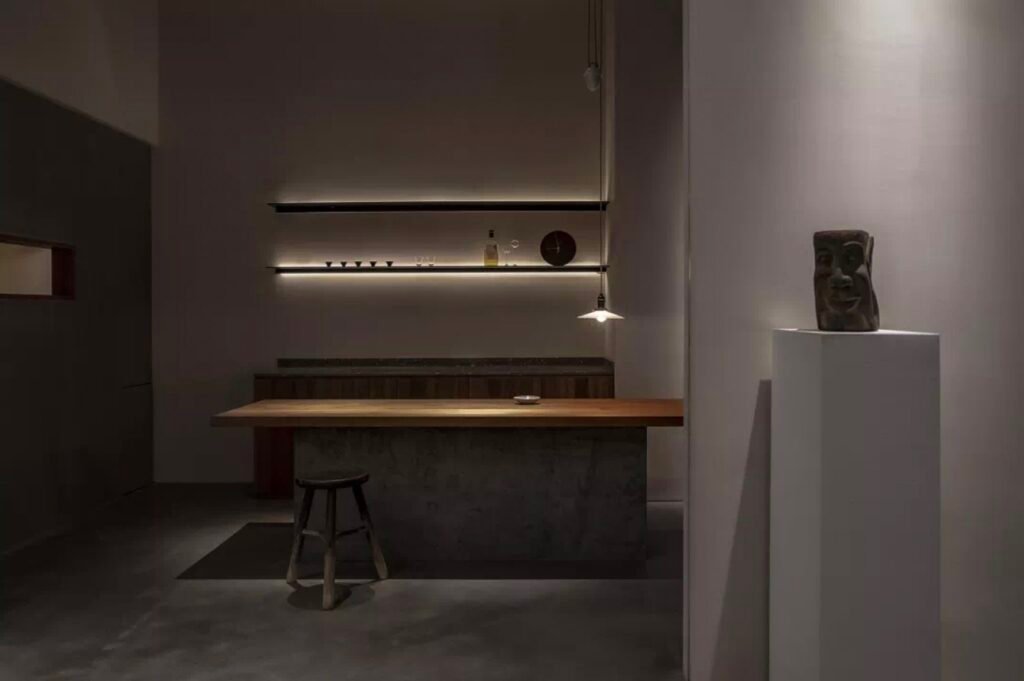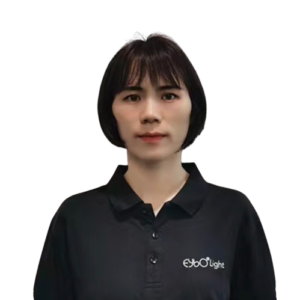“What turns today’s mysteries into tomorrow’s common sense is science, no matter what it pretends to be”, is a quote from Richard Kelly’s “Light is an Integral Part of Architectural Design” published in 1952. At that time, he believed that lighting design was undergoing a revolutionary change, and now in 2021, we are also seeing a revolutionary change in lighting design.
The role and value of light and lighting design
The first paragraph from “Liezi – Tianrui”, that is, “there is a shape, there is a shape, colored, colored”. “Shape and color”, is the idiom we all know, but perhaps we rarely go deeper into the meaning, the “shape” is a verb, and the “shape” is a noun, Therefore, the meaning of this sentence is: there are things with form, there are things that make the tangible things show form; there are things with color, there are things that make the colored things show color. And light is the one that makes the form appear, color performance, and even can change the “shape” and “color” to bring us a more different perception of things, so light or lighting design is the first function, the first role or the first purpose is to show things, Therefore, the first function, the first role or the first purpose of lighting design is to express objects, to show the world, to let us see the shape, color, texture, material of the world, to help us see the world better.

The second paragraph is from the modernist architectural design master Le Corbusier, he said “the atmosphere is born in light, space into a light, architecture is described in the light”, this concept goes beyond the level of how things are expressed, to the entire space, focusing on the creation of the atmosphere of the entire space and the expression of the spirit of the place, which is also the second important function of lighting or purpose.
The third paragraph from the father of modern architectural lighting design – Richard Kelly’s teacher, the master of stage lighting design – Stanley McCandless, was in the architectural lighting design has not been developed when speaking of this paragraph. “If we see how the lighting of the theater affects the atmosphere, we will know that shortly, we may be able to create this atmosphere in homes or other places, where it is more important than the theater!”
He thinks of the lighting design of architectural space from the stage lighting design, telling us that we should use lighting to express what we want to interpret in living space, express the atmosphere, express the scene, express the drama.
In the fourth passage from lighting designer Clark Johnson, he said, “How I hope that soon, we can not only enjoy the light but also personally feel the light and shadows and clouds of a thousand changes, like being in the embrace of nature.” This passage emphasizes the concept of healthy and natural lighting.

In the past two years, we will find especially many products simulating nature, such as net sunset lights, water pattern lights, clear skylights, dome lights, etc., because the human yearning for nature is engraved in the genes and will not stop in its tracks, so the natural and healthy aspect of lighting is very important, which is also the value and purpose of the fourth light.
The concept of the RIGHT LIGHT DESIGN
Based on the previous views and the current development trend, we put forward the concept system of RIGHT LIGHT DESIGN, which can be simply summarized as 1st CORE, 2nd PRINCIPLES, 3rd EFFECTS, 4th ELEMENTS, 5th STEPS, 6th TYPES, 7th METHOD.
CORE
Let’s start with the core. The RIGHT LIGHT DESIGN is based on scene creation. Almost all of the past lighting design is in the spatial dimension, only the space performance, does static lighting design, but not deep into the space, from a higher dimension is the dimension of time to consider the scene.
The RIGHT LIGHT DESIGN advocates that we have to do lighting design from the dimension of the scene, if the living room at home has five different activities, then there may be five different lighting patterns, so we need to think about the whole space in different times will have what changes, what kind of lighting atmosphere is needed to meet the needs of various activities.
For the scene of the study, we summarized a magic formula with six elements, which six elements including people, activities, things, space, light, and time.
First of all, we can easily see the “people”, the “people” can be men, women, the elderly, children, etc., and behind the people, there is an invisible thing called “activity”, it is We do interior design, lighting design needs to communicate with customers, to dig deeper to get the information.
Secondly, we can easily see the “things”, the “things” is the entity we see with the naked eye, behind the “things” there is a thing called “empty”, which is the space between things and things, people and things, people and people, we can not see things, a person in which the activity of the place.
After we have a little knowledge of light, it is easy to enter see things add light, a thing a light state. Simply put, there is something in a space with a light “light”, so it is easy to lead to the design is too full, especially now no main light design is very popular, you will find a home but a wall, but a furnishing, or a table, you will add a light or several lights to “light up”.

We can easily see the visible “things” in front of us, but we may forget the “empty” behind, those things we can’t see, so sometimes we forget to “leave white space”, but destroy the atmosphere of the whole space. The whole space atmosphere.
The essence behind the light we take for granted is time, or light is time. If there is no sunrise and sunset, moon and starry sky, these natural light changes, we can not perceive the morning and evening alternation of day and night rotation, can not perceive the passage of time, and will not form our 24-hour physiological rhythm cycle.
PRINCIPLES
Based on the understanding of the scene, and the need to create a scene with light, we can understand that we should use light to meet the needs of people’s activities in different spaces at different times.
To this end, we summarize the two principles of panoramic light design, that is, people-oriented, design light for life. In other words, it is to use different lights to meet different activity scenes. Therefore, panoramic light design is human-centered design, that is, human factors lighting design.
EFFECTS
Previously we outlined the role and value of light, systematically summarized, can be divided into three parts: visual scene, physical and mental health, and atmosphere mood.
The first is the visual landscape, which includes visual efficacy, health-related visual comfort, and emotion-related spatial feelings.
The second is physical and mental health, including vigilance, physiological rhythm, visual comfort related to vision, and emotional health related to emotional psychology.
The first two are very scientific and technical, the third may be the most important, the most core of all lighting design, but also the most difficult part, is how to use light to create the emotional atmosphere of the space, including the atmosphere of the space, the state of mind in which people, and the visual space feelings, and health-related human emotional psychology.
ELEMENTS
There are only four elements of lighting design: the lumens of light, the color temperature of light, the distribution of light, and the variation of light.
We are ushering in a revolutionary era, the biggest problem and trouble with indoor lighting in the past compared to natural light is that indoor lighting is constant illumination, constant color temperature, static, light does not change, and now LED technology and intelligent technology makes it easier and richer for light to change, and change is the biggest feature of natural light.
STEPS
We understand the core, principles, role, and design elements of RIGHT LIGHT DESIGN, so how exactly do we do the light design?
We summarized the five steps of the conceptual design: people – mind – things – feelings – scenery. Simply put, when we start to do the concept of design, we first figure out what kind of people, with what kind of state of mind, come here to do what kind of things, and what kind of mood we want TA to have when doing these things, and what kind of scenery we will see in front of us. From these reflections, go to refine your design concept and plan your design plan.
TYPES
These six types of light are an extension of Richard Kelly’s “Lighting Trilogy”, namely, focal light, ambient light, colorful light, operational light, rhythmic light, and media light.
The first three types of light are the “lighting trilogy” proposed by Richard Kelly, and the last three types of light are condensed and summarized by the integration of physics, psychology, physiology, and the development of media communication.
The work light refers to the light to meet the visual work, the need for sufficient light quality, so that people visual comfort, mental focus, efficient and sustained.
Rhythmic light refers to the light that cares for physical and mental health and needs to make the light conform to the rhythm, adjust the body function, and make people physically and mentally healthy, full of energy and vitality.
Media light refers to the light that transmits information content, through the light to complete the safety, orientation, and specific information content delivery. Now in the city lighting and commercial space used in a large number of light display products, is typical medium light. The application of media light especially needs to pay attention to brightness control.
METHODS
Perfect design, need to answer a lot of questions. So which questions to ask? We combined the classic 5W2H model to summarize the seven methods of panoramic light design: WHO, WHAT, WHERE, WHY, WHEN, HOW, HOW MUCH.
- WHO?
For whom? Who operates? Who uses? Who pays?
- WHAT?
According to what? According to what activity? What’s the effect? What kind of spatial feeling and emotional atmosphere do you create?
- WHERE?
Where are the lights pointing? Where are the lights installed? Where are the lights controlled?
- WHY?
Why? Why must it be so?
- WHEN?
When to use what light? When did it become what kind of light?
- HOW?
How to light it? How is the lighting effect? How to control the lights? How to use lights? How to maintain the lights?
- HOW MUCH?
How much light do you use? How many lights do you want? How much electricity does it cost? How much does it cost? How much use?
Under each one there are some specific questions to ask yourself and to think clearly. Especially WHY, which I put in the middle, is the question to be asked behind each one: “Why? Does it have to be this way? Why do I see it?” Ask a few more whys about everything, and if you think clearly about these questions, then the design you do is good.
Our conclusion at the end of the sharing
Lighting design is an art and a science. Taoist magic tools, it has a complete set of logic systems and a systematic landing methodology.
The metaphysical is called Tao, and the metaphysical is called utensil; only focusing on “art” and “utensil” will easily deviate from the essence and direction of lighting design; if only focusing on “Tao”, it is easy to fall into emptiness and vainness, and make lighting design into metaphysics.
EYBO as a professional and experienced lighting factory, we “know the law”, “good technique”, “recognize the device”, “ask” and “apply”. and can help you to choose the RIGHT LIGHT and RIGHT LUMINAIRES.


